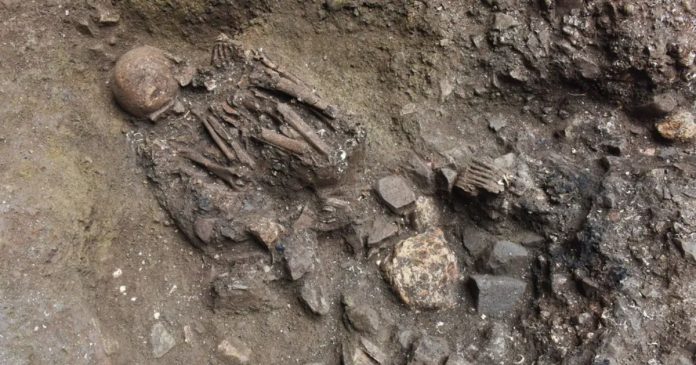Discovery of a 7,100-Year-Old Genetic Enigma
A recent genomic analysis of over 100 ancient individuals from China has revealed a previously unknown “ghost” lineage, shedding light on the genetic diversity of early populations in the region. The findings, published on May 29 in the journal Science, center on a 7,100-year-old female skeleton unearthed at the Xingyi archaeological site in China’s Yunnan province.
The study, led by researchers including paleontologist Qiaomei Fu from the Institute of Vertebrate Paleontology and Paleoanthropology in Beijing, examined 127 ancient human genomes, most dating between 1,400 and 7,150 years ago. The oldest individual, a woman referred to as Xingyi_EN, provided crucial insights into an elusive ancestral group that may have contributed to modern Tibetan populations.
Tracing the Origins of Tibetans
One of the key questions in East Asian prehistory has been the origins of Tibetan populations. Previous research indicated that Tibetans possess a mix of northern East Asian ancestry and an unidentified genetic component—now potentially linked to the newly discovered ghost lineage.
Xingyi_EN, a hunter-gatherer from the Early Neolithic period, exhibited ancestry distinct from other East and South Asians. Instead, her DNA aligned more closely with a deeply diverged Asian population that had remained genetically isolated for millennia.
The Basal Asian Xingyi Lineage
The researchers identified Xingyi_EN as part of a previously unknown lineage, which they named the Basal Asian Xingyi lineage. This group is believed to have separated from other human populations at least 40,000 years ago and remained genetically distinct due to prolonged isolation.
Unlike Neanderthals or Denisovans—archaic humans known to have contributed DNA to modern populations—this ghost lineage represents a unique branch in human ancestry. “The possible isolation allowed this ancestry to persist without apparent admixture with other populations,” Fu explained in an email to Live Science.
Genetic Legacy in Modern Tibetans
At some point, descendants of the Basal Asian Xingyi lineage interbred with other East Asian groups, introducing their genetic material into the ancestral Tibetan gene pool. “The mixed population has lasted for quite a long time and contributed genes to some Tibetans today,” Fu noted.
However, the researchers caution that these conclusions are based on a single individual’s genome. Further studies with additional samples will be necessary to confirm the relationship between this ancient lineage and modern Tibetan populations.
Implications for East Asian Prehistory
The findings highlight Yunnan province’s significance as a region of immense ethnic and linguistic diversity, both in ancient times and today. The researchers suggest that prehistoric populations in this area may hold answers to unresolved questions about migration and genetic mixing in East and Southeast Asia.
As more ancient genomes are analyzed, the mysterious ghost lineage may become less spectral, offering a clearer picture of humanity’s complex ancestral tapestry.

